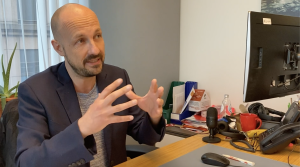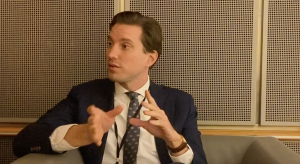My reporting in Brussels is focused on the gender pay gap between men and women living within the European Union. This is a contested and vitally important issue given that women make up more than 50 percent of the world’s population.
I have interviewed three members of the European Parliament to address the issue. The interviewees are responsible for dealing with these issues within their party. Since they belong to different ideologies they were able to offer me different perspectives on how to deal with the situation:
Lina Gálvez Muñoz – Group of the Progressive Alliance of Socialists and Democrats in the European Parliament. Spanish Socialist Workers Party (Spain).
Marc Botenga – Left-wing group in the European Parliament. Labor Party of Belgium (Belgium)
Michiel Hoogeveen – European Conservatives and Reformists Group Netherlands – JA21 (The Netherlands)



First of all, it is worth defining the term gender gap. According to the Oxford dictionary, this is its definition: “the difference between the amount paid to two different groups of people”. In this case, I focus on the difference between men and women.
According to the World Economic Forum’s Global Gender Gap Report 2022, Europe has at least 60 years to go before it reaches parity. A figure that generates some discomfort, especially for left-wing parties, which are usually more sensitive to these issues. In the report, Lina Gálvez and Marc Botenga explain the root problems of this issue and stress the importance of immediate action to solve it as soon as possible.
Although one of the fundamental principles of the EU is gender equality, women in the bloc still earn 13% less than men. The truth, as interviewees say, is that there is a “social historical” factor involved that has been inherited from generation to generation. Some interpret it as a natural sign of being human. Others, on the contrary, consider that this is due to a social application that must be eradicated in order to achieve equal opportunities.
Women, who are disproportionately assigned the primary care of children, tend to choose jobs that offer flexible or shorter hours. This has created an unequal burden for women to take career breaks to facilitate childcare.

In fact, here’s a striking statistic. Although more women than men complete higher education in the EU, they are underrepresented in the labor market. Nearly 30% of women in the EU work part-time, compared to 8.4% of men, and they are much more likely to stop working to care for their children and family. This also means that fewer women are promoted to leadership positions. Less than 8% of the world’s top companies have women as CEOs.
This situation leads to another problem for the future. The gender pay gap puts women at greater risk of poverty in old age. In 2020, EU women aged 65 and over received pensions that were, on average, 28.3% lower than those of men.
In addition, a key strategy proposed by the European Parliament is to enforce rules requiring employers to make wages transparent. In April, the Parliament voted to require EU companies with at least 50 employees to disclose information that makes it easier for colleagues to compare salaries and uncover any existing gender pay gap in their organization.




